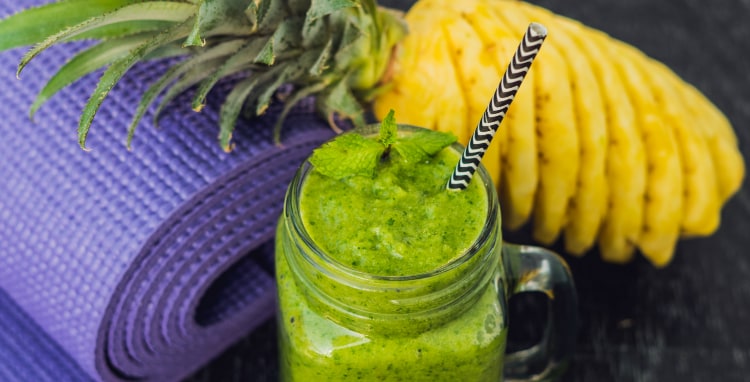
Sometimes it’s not what you eat, but when you eat. Our bodies are more than simple biological machines. We’re creatures of nature, and like everything in nature, timing is everything. Animals sleep and eat on a schedule and with the seasons. However, modern conveniences have broken the human need for timing.
We can eat whatever we want, when we want. But this convenience comes with some consequences when it comes to maintaining weight. And we’re not just talking about how easy food access can make it challenging to maintain a diet.
Meals and timing
To understand how humans go with the natural flow, it’s essential to understand the concept of circadian rhythms. These are physical, mental, and behavioral changes that follow a twenty-four-hour cycle, and affect most living things, from plants to humans. Circadian rhythms are influenced by the changing light, as day goes to night, and determines things like sleep schedule and even metabolism.
This means your body is absolutely affected by the time of day. It has meaningful consequences for your eating habits as well. For example, your body tends to increase its metabolism for eight hours or so while asleep. It’s a good idea to restrict all meals to roughly a twelve-hour block during the day. Leave all the time outside that block for your body to handle digestion.
When you have meals within that time period also matters. While it’s different for every person, in general, it seems that eating meals earlier in the day, and putting more focus on those earlier meals, is better for overall health and weight control. So get a healthy breakfast and lunch! Too often people skimp on these crucial meals, and then gorge themselves at dinner.
Obviously, there are some extra considerations to take into account when it comes to planning mealtimes. For example, your doctor may recommend you adjust eating times if you have particular conditions, such as diabetes.
Intermittent fasting
If you think nutritionists would be interested in how mealtimes affect weight gain and loss, you’d be absolutely correct. Many nutritionists have expanded the idea of more strictly dividing our eating and resting-from-eating times. This is why the idea of intermittent fasting has emerged. This is the concept that planning meal times is just as important as planning what to eat.
One of the most interesting (to us) forms of time-restricted eating is “time restricted feeding.” This refers to a program by which you start restricting yourself to that twelve-hour eating window mentioned earlier but then gradually close that window. In essence, the idea behind intermittent fasting is that you’re increasing the amount of time in a day your body spends on digestion and metabolism.
So while you might start out by restricting all your eating to a twelve-hour window, with time-restricted feeding, you can start organizing meal timing to shrink that window down to ten or even eight hours. This means the time to metabolize your meals is only going up. Even if you keep your caloric intake roughly the same as usual, by restricting that caloric intake to a specific time period, you can start to see weight-loss results.
Benefits of intermittent fasting
What’s really intriguing about intermittent fasting is the benefits it offers beyond simply weight loss. Intermittent fasting has been linked to better control of critical bodily functions, such as blood sugar, blood pressure, insulin sensitivity, and inflammation management. It turns out that humans, biologically, probably aren’t used to being able to grab midnight snacks from a fridge! Embracing intermittent fasting can help you fight back against a host of health issues beyond letting you take better control of your weight.

Green juice and intermittent fasting
When looking up time-restricted eating, you’re sure to hear a lot of discussion about intermittent fasting drinks. It’s no surprise, given that juice cleanses and intermittent fasting are somewhat related. Both harness your body’s own metabolism to enter a “fasting mode” where fat gets burned at an accelerated rate. Both use the health benefits of fasting periods to tackle issues, such as blood sugar management.
But there’s no reason to keep the two separate. Intermittent fasting and green drinks can be one of the best nutrition crossover events out there! Firstly, a green drink is a great way to go about breaking your fast. Too many people look at intermittent fasting as a “free ticket” to eat whatever during the non-fasting period. While the idea is to focus on timing, it should be noted that what you eat could have significant effects. If you break your fast with a fatty or sugary meal, you could be in for some headaches.
What your body really needs after the fasting period is a ton of nutrients. This is where the concept of intermittent fasting drinks comes in. With green juice for intermittent fasting, you can get all the vitamins and minerals you need to get back in action and ready for the day.
Get the best in green drink with Chef V
When it comes to green juice for intermittent fasting, you can’t get much better than Chef V’s signature green drink. Always blended for maximum nutritional impact, our green drink will give you everything you need to recharge when undertaking intermittent fasting, or one of our juice cleanses.
We have plenty of other great products for time-restricted eating as well. Need detox smoothie recipes for intermittent fasting? How about some detox soups? Both are available in our cleanses. No matter how you want to tackle your weight loss goals, Chef V is here to back you up.